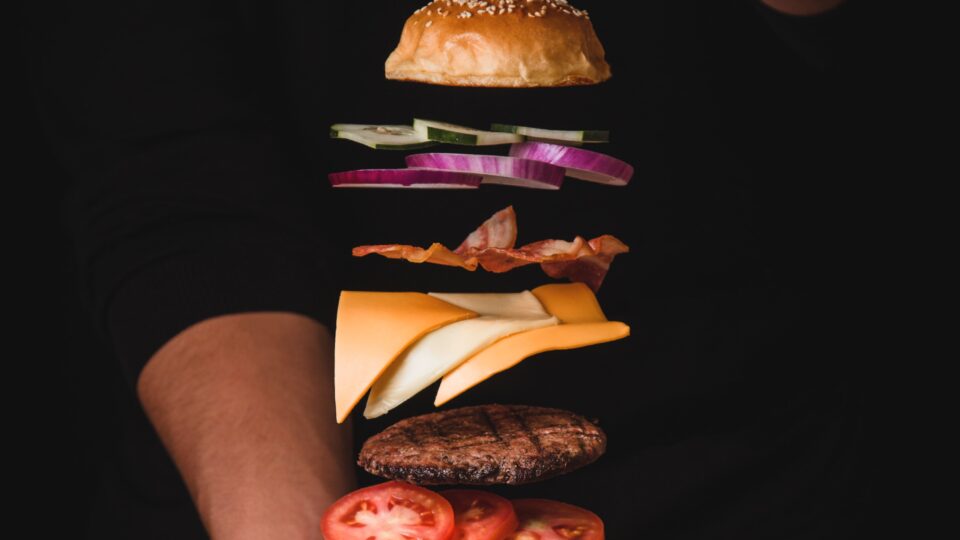The opportunity of convenience eating
Adapted from Episode 133 of Dr. Jade’s next Level Human Podcast.
In this episode, Dr. Jade shares a complete guide on convenience-based eating. He explains that by following a few reasonable and realistic rules, it is possible to have a balanced diet and a healthy lifestyle even if you include convenience foods and fast foods here and there. He also defines his acronym, F.A.S.T.F.O.O.D., for achieving this balance.
Eating healthy is a skill. Likewise, making better food choices when we’re on the road, traveling, or eating out is a skill too. Like many things in life, skills take time to develop. And practice. Lots of practice.
Information and knowledge are great, but we need to practice eating healthy to achieve our nutrition goals. We can read research papers and blogs (like this one) all day long, but targeted practices help us build the skills and confidence to translate knowledge into action.
So what kind of tasks should we practice if we want to eat healthy convenience foods?
If you’re like most people, you like structure. But you probably want a little bit of wiggle room too. Am I right? A sustainable approach involves both structure and flexibility. At Metabolic Living, we call this “structured flexibility”. We like structure because guidelines and rules provide clarity, comfort and assurance. We like flexibility because it allows us to individualize our diet and lifestyle habits according to our 4Ps (personal preferences, psychology, physiology, and practical circumstances).
In this post, I’ll be sharing Dr. Jade’s framework for convenience eating. It’s a structure because it’s a set of rules we can follow. But more importantly, it helps us develop the skill of choosing higher quality foods more often using targeted tasks that we can easily do daily, or as often as possible.
Given that many of us eat convenience foods, we are exposed to a lot of processed food and foodstuff. High sugar, high fat, and high calorie foods (high everything it seems) are everywhere. Is it all-or-none in these situations? Luckily, the answer is no! There is a middle ground. Dr. Jade created a framework to help us navigate these tricky situations and embrace the opportunity of convenience foods.
Here it is folks.
The acronym, F.A.S.T.F.O.O.D., for achieving this balance:
F is for FAT (over starch): foods higher in fat will be higher in calories, so we need to be cognizant of that; however, high starch foods promote insulin resistance which increases the storage of fat (especially around the tummy).
A is for AVOID: avoid the combination FAT + STARCH especially if it’s a trigger for you. This combination is incredibly satiating (hunger suppressing) but also highly addictive. If this combination typically triggers you to eat more, then avoid these foods or meals. Think nachos, pizza, poutine, waffles, burgers etc. Alternatively, consider if there is a way to modify this meal according to the first rule “fat over starch.” For example, a burger with no bun, aka a “naked burger”. Add that to a bed of your favorite greens and that takes us to the next rule.
S is for SALAD (with no starch): foods rich in fiber, protein and water tend to be most satiating (reduce hunger) and lower in calories. Omit/reduce the starchy add-ons like croutons or dried fruits. However, if vegetable and protein based meals leave you hungry, or don’t keep you full for long, try adding fat to those meals. Healthy fat options for a salad might include olive or avocado oil, eggs, nuts and seeds, avocado, olives, cheese, fattier fish. Remember that fats are higher in calories, so serving sizes are ~1 thumb or ~1 tbsp (14 g).
If adding fat to protein and vegetable based meals does not help, try adding starch instead. That takes us to the next rule.
T is for TASTE: add 3 big or 5 small bites of starch. We don’t need to cut carbohydrates from our diets completely, but most of us need to control carbohydrates. Too much or too little can negatively impact hunger, energy and cravings (HEC). Experiment with an amount that gives sustained energy but does not result in fat gain; hence the 3-5 bite rule. Starchy foods that are higher in fiber and rich in water are useful for energy. Think oats, brown rice, beans and quinoa.
F is for FRUIT: real, whole and unsweetened fruit. For this rule, Dr. Jade recommends 1-2 pieces per day and for breakfast.
O is for ONLY zero or low calorie and/or low sugar beverages: water, coffee, unsweetened tea, etc.
O is for ONE free meal: once per week, eat what you like within a 2 hour window. Extending this eating window could make it harder for some people to get back on track. That’s because “free meals” or “cheat meals” have the potential to become “free days” and “free weeks”. To avoid this, Dr. Jade recommends an eating window of 2 hours to buffer overeating. Some people have a hard time with this approach, so consider if this will work for you. If you think it might derail your progress, save it for later when you’ve got a few more reps in the tank (practice doing this).
D is for DO some exercise every day: choose shorter more intense exercise or longer more relaxing exercise. If it’s possible, plan exercise around your starchy meals for better “nutrition partitioning”. This will improve insulin sensitivity and buffer the high insulin response from eating high-starch foods. In other words, extra calories are used for energy instead of being stored as fat.
That’s it. A framework with EIGHT targeted and specific practices to help you develop the skill of eating convenience foods in a healthy and balanced way.
Let us know which one/ones you’ll practice next time you eat out.
Photo by Pablo Merchán Montes on Unsplash

